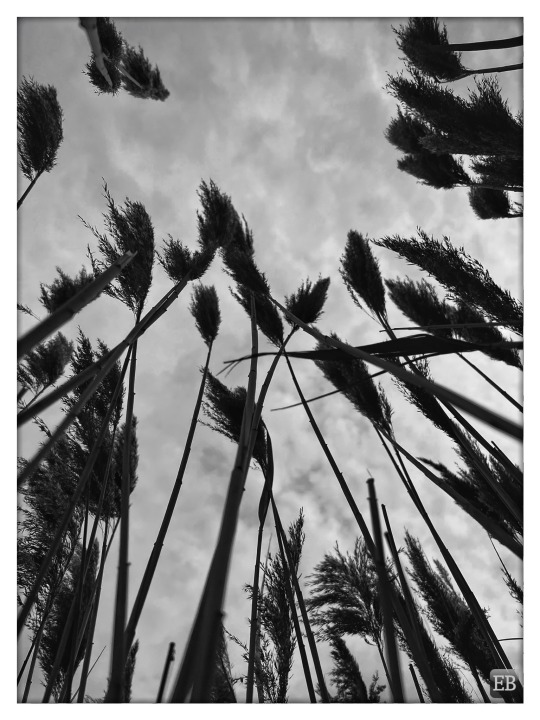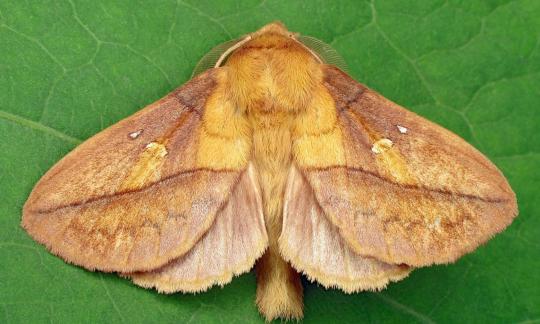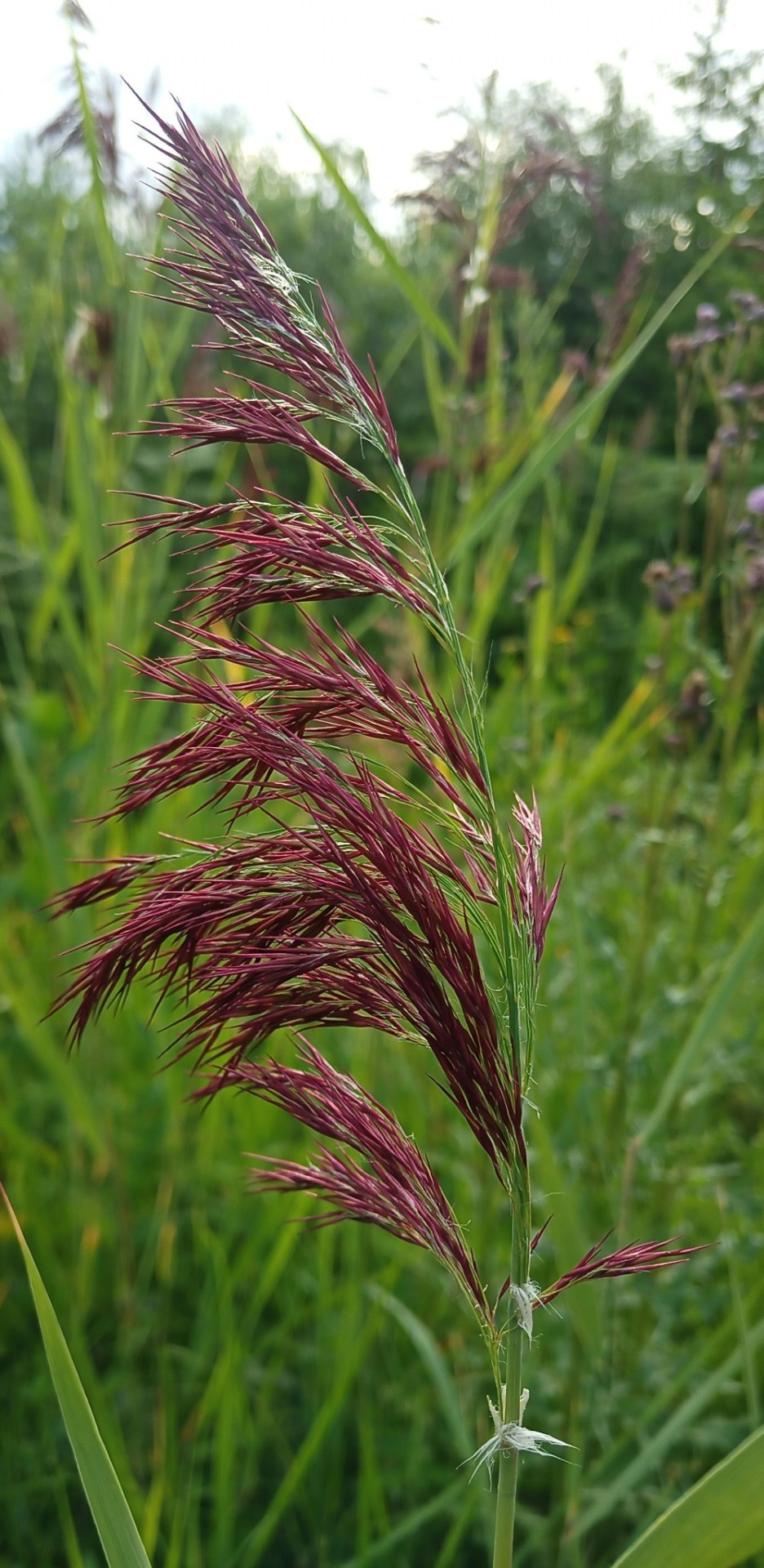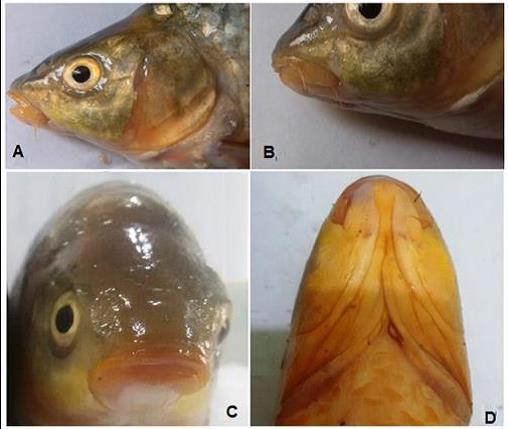#Phragmites australis
Text
Ok y'all I have promised my beloved mutual @pop-squeak that I would write a post on my most beloved invasive marsh plant, Phragmites australis also known as the common reed. This thing is so invasive that it is considered a model for invasive plants as a whole.
Some things before we start
Most of this is focused on Virginia since that's where a lot of the research on this bad boy is being done but it does exist elsewhere
I will have citations at the end if you want some more reading
This is based on research I did for a paper like a year ago so there might be new research I am unaware of due to having other classes to do
Please brush off your shoes when you enter/ leave a park so you don't bring stuff places it shouldn't be
Please read I promise it is really really interesting and important to the resilience of out coasts in North America especially in the mid Atlantic to the south :)
If you have questions don't be scared to drop them in the replies/ reblogs
I am an undergrad!!!!! I am generally new at this but I am fairly familiar with this specific subject and trust that everything in this post is accurate, but in general with invasive species it is a heavily nuanced topic that can be very complex. This is my best attempt to simplify this species for general consumption since I think its just really cool and important to coastal botany rn.
This thing lives in the marsh which is the area often between forest and the ocean/ body of water of varying salinity. This thing loves moderate salinity marshes since it can somewhat resist salt water intrusion. This is a part of what makes it so invasive especially in this era of severe sea level rise. Many coastal forests are dying as sea level is rising pushing the marsh farther inland. Part of the problem is that many native species can not move as colonize the new land as fast as the common reed can.
Phragmites as is incredibly good at reproducing and growing so close together that nothing else can live even close to it. It makes clonal offshoots of itself (THEY CREATE CLONES OF THEMSELVES?!?!?!?!?) and creates networks for communication. this dense packing leads to a monoculture where for miles in the strip of marsh 95% of what you see is phragmites. It is a magnificent and horrifying sight as you see the dead trees in the middle of these fields of phragmites knowing it was only 5-10 years ago that that was where the forest line was. It is the beautiful horror about being slowly consumed by the ocean. This monoculture does not only apply to flora but also fauna.
Farmers often actually welcome phragmites to their land and are resistant to get rid of it. This is because as native species have died off, phragmites has been able to colonize these areas fast enough to help resist further salt inundation and prevent flooding. This unfortunately is only a band-aid solution, especially in southern Virginia near the Chesapeake bay which has some of the highest rate of sea level rise in the country, since native plants and diverse marshes make them more resistant to flooding. It is better than nothing though, so we must keep in mind transition plans for farmland when trying to manage phragmites. We practice science to help every day people, not in spite of every day people. They should be included in all management decision making. We work for them not the other way around.
Competition is the name of the game for Phragmites. It beats is competition not only with its cloning abilities (there's a lot more to this but i had to read like 7 different papers to figures out wtf anybody was talking about so I'm not going into it) and sheer density, but it can also just poison the other plants around it. It can release a toxin that inhibits growth and seed sprouting in other species. It is also resistant to flooding and drought and it has been found that ground disturbance can make it spread faster. This makes it highly resistant to most disturbances that occur in marsh and wetland habitats.
Because it is resistant to like everything it is so hard to kill. To the point where some of the people who management have told me that eradicating it for an area is near impossible and an unreasonable expectation. Reduction has become the best case scenario. This makes early identification important. You can try to kill it by herbicides, mowing, fire, smothering with a plastic tarp, throwing a bunch of salt on top of it, and flooding with fresh or salt water.
The common reed is an interesting mix of being both a native and invasive plant. Phragmites australis has a subspecies native to North America, but this subspecies has been largely replaced by a more aggressive non-native European subspecies. Phragmites can grow from three to thirteen feet with broad sheath like leaves. Its considered one of the most invasive plants in the worlds having a broad geographic range. It exists on every continent except Antarctica.
As someone who has been in a field of them you can not pull these out of the ground. The tops break off but you have to dig them out of the ground if you wan them out. Also just a pain to walk through.
Here's a pic: (Yes that a person, yes they can be that tall)
Works Cited
Langston, A. K., D. J. Coleman, N. W. Jung, J. L. Shawler, A. J. Smith, B. L. Williams, S. S. Wittyngham, R. M. Chambers, J. E. Perry, and M. L. Kirwan. 2022. The effect of marsh age on ecosystem function in a rapidly transgressing marsh. Ecosystems 25: 252-264.
Humpherys, A., A. L. Gorsky, D. M. Bilkovic, and R.M. Chambers. 2021. Changes in plant communities of low-salinity tidal marshes in response to sea-level rise. Ecosphere 12.
Accessed 9 December 2022. Invasive alien plant species of Virgina: common reed (Phragmites australis). Department of Conservation and Recreation, Virgina Native Plant Society.
https://www.dcr.virginia.gov/natural-heritage/document/fsphau.pdf
Accessed 9 December 2022. Common reed (Phragmites australis). Virgina Institute of Marine Science.
https://www.vims.edu/ccrm/outreach/teaching_marsh/native_plants/salt_marsh/phragmites_facts.pdf
Theuerkauf, S. J., B. J. Puckett, K. W. Theuerkauf, E. J. Theuerkauf, and D. B. Eggleston. 2017. Density-dependent role of an invasive marsh grass, Phragmites australis, on ecosystem service provision. PLoS ONE 12.
Accessed 9 December 2020. Phragmites: considerations for management in the critical area. Critical Area Commission for the Chesapeake Bay and the Atlantic Coastal Bays.
https://dnr.maryland.gov/criticalarea/Documents/Phragmites-Fact-Sheet-Final.pdf
Uddin, M. N., and R. W. Robinson. 2017. Allelopathy and resource competition: the effects of phragmites australis invasion in plant communities. Botanical Studies 58: 29.
Meyerson, L. A., J. T. Cronin, and P. Pysek. 2016. Phragmites australis as a model organism for studying plant invasions. Biological Invasions 18: 2421-2431.
#im having a lot of fun#This is another one of those things i had a very fun time making but will get 2 notes#and thats ok#this is what i want to get my phd in..... hopefully#ecology#biology#coastal biology#coastal botany#botany#phragmites australis#invasive species
15 notes
·
View notes
Video
n381_w1150 by Biodiversity Heritage Library
Via Flickr:
A natural history of British grasses.. London,Groombridge,1858.. biodiversitylibrary.org/page/15461260
#Gramineae#Great Britain#Mertz Library#The New York Botanical Garden#bhl:page=15461260#dc:identifier=http://biodiversitylibrary.org/page/15461260#flickr#botanical illustration#scientific illustration#PHRAGMITES COMMUNIS#Phragmites australis#common reed#reed#reeds#grass#grasses
2 notes
·
View notes
Text
“In The Reeds”

View On WordPress
#black and white#common reed#In The Weeds#monochromatic#overcast#Phragmites australis#plants#reeds#wetland grasses
0 notes
Text
Language of Flowers: Reed
In the language of flowers, the flower for today, October 17, is the Reed, which signifies complaisance.
Image above from Wikipedia.
The Celtic meaning of the Reed deals with themes of connectivity, networking, and provision. Although the Reed (Phragmites australis) isn’t a tree, the Druids viewed any large plant with a woody stalk to be a tree, and the Reed was considered very important. All…

View On WordPress
#birthday#Celt#Celtic#complaisance#Druids#herbalism#Language of flowers#october#Phragmites australis#Reed#thatched roofs
0 notes
Text
¿Historias cortas para no dormir y así no tener pesadillas? (Phragmites australis) • Caña, Caña de escoba.
El carrizo común , carrizo cepillado o sagne ( Phragmites australis ) es una especie cosmopolita de herbáceas perennes de la familia de las Poaceae , subfamilia de las Arundinoideae .

Hay varios linajes de caña común, que han evolucionado de forma independiente durante miles de años. Desde el comienzo del xx ° siglo, América del Norte está siendo testigo de una invasión secreta por una o más líneas de origen euroasiático, sobre todo en las carreteras .
Proporcionan un excelente refugio para paseriformes y pequeños mamíferos. También se utilizan ampliamente en plantas de tratamiento de filtros plantadas con juncos ( fitopurificación ).
Los apellidos Sagne, Sagnes, Sagnier, etc. están vinculados a los antiguos oficios de explotación de estas cañas. El topónimo La Seyne-sur-Mer está vinculado a la presencia de juncos en la zona.
En Camarga , la caña se llama sagne cuando está lo suficientemente seca como para ser cortada, cosechada y convertirse en material aislante y de construcción. Se utiliza en la construcción tradicional de la cabaña de la Camarga, también conocida como cabaña de los gardianos .
#El carrizo común carrizo cepillado o sagne ( Phragmites australis ) es una especie cosmopolita de herbáceas perennes de la familia de las P#¿Historias cortas para no dormir?
0 notes
Text
Moth of the Week
Drinker
Euthrix potatoria

The drinker moth is of the family Lasiocampidae. It was described and named in 1758 by Carl Linneaus. Linneaus chose the species name potatoria as it means ‘drinker-like.’ Dutch entomologist Johannes Goedaert had previously called the moth dronckaerdt, meaning ‘drunkard,’ “because it is very much inclined to drinking” or because this moth repeatedly puts its head into water. The common name ‘drinker’ comes from the same reason.
Description This moth is distinguishable from other eggar moths by a diagonal line crossing the forewing and two white spots also on the forewing. Males are usually reddish or orangish-brown with yellow patches. Males in East Anglia are often yellowish. Females can be yellow, a pale buff, whitish, or a darker reddish-brown than the males. Male and females also differ in size and antennae shape: females are slight larger than males, and males have fluffier antennae.
Wingspan Range of Fully Grown Drinker: 45–65 mm (≈1.77 - 2.56 in)
Diet and Habitat The caterpillars of this species feed on grasses and reeds in genuses such as Alopecurus, Deschampsia, Dactylis, Elytrigia, Carex, Luzula, and other Gramineae. A few examples are Cat grass (Dactylis glomeratus), Common Reed (Phragmites australis), Reed Canary-grass (Phalaris arundinacea), and Wood Small-reed (Calamagrostis epigejos).
In the spring, they feed mainly at night and can be found resting on low vegetation during the day. The larva also supposedly drink morning dew because it had been observed to repeatedly put its head in water.
This moth can be found in Europe. It is common throughout England and Ireland but tends to favor western Scotland over eastern Scotland. It prefers habitats of marshy places such as fens, riversides, tall and damp grassland, marshes, damp open woodland, scrub, and ditches. However this species does sometimes live in drier habitats such as grassy terrain and urban gardens.
Mating Adults can been seen between July and August and presumably mate during this time. There is only one generation per year. Eggs are laid mainly on the stems of grasses or reeds in small clusters.
Predators Adult moths fly at night and are presumably preyed on by nocturnal predators such as bats.
Fun Fact Both sexes of the drinker moth are attracted to light, but males are especially susceptible.
(Source: Wikipedia, Butterfly Conservation)
#Euthrix potatoria#drinker#drinker moth#Lasiocampidae#libraryofmoths#facts#insects#mothoftheweek#animals#bugs#moth#lepidoptera#happy new years!#sorry for not posting
91 notes
·
View notes
Text

so I was drawing this guy, and then “worship” by amber run came up in my playlist. not only is it a very him song just in general, but these lyrics in particular fit just great:
“You've got a hold of me
Dug deeper than you'd ever believe
Started feeling like it's more a disease
When I close my eyes it's you I see”
this is one of the pieces for cringetober 2023 (more info here)
prompt: day 20 — hanahaki disease! the bloom is phragmites australis, also known as common reed)
#my art#beyond evil#beyond evil jtbc#han joowon#jwds#well it’s implied you know#100% convinced that the first time joowon hacks up a bloom he just stares at it uncomprehendingly for 10 seconds#and then shoves it right back into his mouth in complete and utter denial#cringetober 2023
94 notes
·
View notes
Text

Schilf, Schilfrohr | Common reed
Phragmites australis
3 notes
·
View notes
Text

Photo : ©skondal
蘆葦 / Phragmites australis (COMMOM REED) 💞 the feeling the color~*
它生長在沼澤、湖泊或溪流、溝渠邊,喜歡潮濕向陽的環境,常成群繁生。
▪︎食用:1. 根部洗淨後可啃食,略帶甜味。2. 嫩筍可切段炒肉絲。煮熟後拌沙拉食用,更可煮湯等。嫩葉可作牛羊馬的飼料。 3. 果實去殼後取米,可煮飯或者粥。
▪︎稈可建築茅屋,或代軟木作絕緣材料;其外層稈壁可織簾、席;纖維造紙。
▪︎花序作掃帚。
▪︎根入藥,為健胃和利尿藥;
▪︎是優良固堤植物。
▪︎藥用:性味~ 蘆根、蘆筍(嫩苗):甘、寒。
▪︎效用:蘆根:清熱生津,滲濕利水,除煩止嘔。治胃熱嘔噦,熱病煩咳,肺熱咳嗽,熱淋澀痛;
筍:止渴利尿。治熱病口渴,淋病小病不利;
蘆莖:治肺癰煩熱;
蘆葉:治上吐下瀉,鼻衄,肺癰,發背;
籜葉:治金瘡;
蘆花:止血解毒。
═════════ ✾ ═════════
這比喻的意思是種子是天主的話。
那些在路旁的,是指那些人聽了,隨後就有魔鬼來到,從他們心中把那話奪去,使他們不至信從而得救。
那些在石頭上的,是指那些人,他們聽的時候,高興地接受那話,但這些人沒有根,暫時相信,一到試探的時候,就退避了。
那落在荊棘中的,是指那些聽了的人,還在中途就被掛慮、錢財及生活的逸樂所蒙蔽,沒有結出成熟的果實。
那在好地裏的,是指那些以善良和誠實的心傾聽的人,他們把這話保存起來,以堅忍結出果實。
Now the parable is this: The seed is the word of God.
And they by the way side are they that hear; then the devil cometh, and taketh the word out of their heart, lest believing they should be saved.
Now they upon the rock, are they who when they hear, receive the word with joy: and these have no roots; for they believe for a while, and in time of temptation, they fall away.
And that which fell among thorns, are they who have heard, and going their way, are choked with the cares and riches and pleasures of this life, and yield no fruit.
But that on the good ground, are they who in a good and perfect heart, hearing the word, keep it, and bring forth fruit in patience.
─ 路加福音Luke : Chapter 8 : 11~15
Thank you 🙏 Amen~*
═════════ ✾ ═════════
And I love this beautiful poetry very much ..... my dad taught us since we're kids :'(
詩經 Classic of Poetry -《秦風.蒹葭》(蒹葭 : commom reed /Phragmites australis)
蒹葭蒼蒼,白露為霜。 所謂伊人,在水一方。
溯洄從之,道阻且長。溯游從之,宛在水中央。
蒹葭萋萋,白露未晞。所謂伊人,在水之湄。
遡洄從之,道阻且躋。遡游從之,宛在水中坻。
蒹葭采采,白露未已。所謂伊人,在水之涘。
遡洄從之,道阻且右。遡游從之,宛在水中沚。
youtube
#skondal#reeds#life#蘆葦#commom reed#well known chinese poetry:蒹葭 by 秦風#詩經 classic of poetry#song : 在水一方#鄧麗君 teresa teng#the feeling the color#💗
13 notes
·
View notes
Text
Discovery of Carasobarbus Sublimus in Al-Diwaniya River, Iraq

Abstract
During a fish survey from 2016 to 2017, we captured 83 specimens of the cyprinid fish, Carasobarbus sublimus from the Al-Diwaniya River, Middle Euphrates, Iraq. This is the first report of the occurrence of this species in this locality. Fish were captured by gill nets and electro-fishing equipment. Twenty two morphometric and eleven meristic measurements were applied to describe the species. The range of total length in the present specimens (130.4-250.1mm) is larger than the range quoted for C. sublimus. The indices characters to standard length (SL) varied from 7.4 % to 121.0 %, and the head characters to head length (HL) from 27.4% to 93.2%. The growth rate between body characters and SL varied from 0.085 to 1.118 and between head characters and HL from 0.210 to 1.091.The numbers of scales in lateral line and around the least circumference of the caudal peduncle are 27-29 and 12, respectively. The biometric data were successful in identifying of C. sublimus and confirm the presence of the species in the Al-Diwaniya River. This is the second record of the species in the Iraqi freshwaters. Based on this finding, the case would be interesting and open to discussion about the distributions of C. sublimus in the Tigris-Euphrates basin.

Introduction
According to Borkenhagen and Krupp (2013), the cyprinid genus Carasobarbus Karaman, 1971 (the himri) belong to the family Cyprinidae, subfamily Barbinae are distributed across southwest Asia and northwest Africa. They occur in all major river systems of the Levant, Mesopotamia, southern Iran, western and south-western Arabian Peninsula and in northern Morocco.
Also, Borkenhagen and Krupp (2013) revised and expanded Karaman’s (1971) diagnosis of the genus that now contains the nine following species: Carasobarbus apoensis, C. canis, C. chantrei, C. exulatus, C. fritschii, C. harterti, C. kosswigi, C. luteus and C. sublimus.

Three species from the genus, C. luteus, C. kosswigi and C. sublimus have been reported from Iranian waters (Borkenhagen and Krupp, 2013) and C. chantrei, C. kosswigi and C. luteus from Turkish waters (Çiçek et al., 2015), while C. luteus, C. kosswigi and C. sublimes were found in Iraqi waters (Coad, 2010; Mohamed et al., 2017).
C. sublimus was first described and reported by Coad and Najafpour in 1997 from Khuzestan waters, southwestern Iran. C. sublimus formerly placed in the genus Kosswigobarbus Berg, 1916, but Borkenhagen et al. (2011) placed this species in Carasobarbus.
Coad and Najafpour (1997) and Esmaeil et al. (2006) have rectified the species by comparing it with C. kosswigi and C. luteus on the basis of their morphology in Iran, while, Mohamed et al. (2017) described and compared C. sublimus obtained from the Shatt Al-Arab River for the first time in Iraq with C. luteus in Iraqi waters.
During the ichthyofauna survey for the Al-Diwania River (a branch from the Euphrates River, middle of Iraq) during November 2016 - October 2017, several specimens of cyprinid fish, C. sublimus have been caught for the first time from south the Daghghara barrier on this river.
The predominant vegetations on the both banks of this locality were reed, Phragmites australis and cattail, Typha domingensis, whereas hornwort, Ceratophyllum demersum was dominant in the deeper areas.
The water temperature of the river varied from 10.2oC in March to 32.8oC in August, dissolved oxygen fluctuated from 5.0mg/l in August to 9.6mg/l cm in February, salinity values ranged from 0.55‰ in April to 0.79‰ in October (Mohamed and Al-Jubouri, 2017).
So, the purpose of this paper is to describe the morphometric and meristic characters of C. sublimus for the first time in the middle of Iraq. Examined specimens had been placed in the fish collection of the Department of Pathology, College of Veterinary Medicine, Al-Qasim Green University, Iraq.
Source Occurrence of cyprinid fish, Carasobarbus sublimus in the Al-Diwaniya River, Middle Euphrates, Iraq
2 notes
·
View notes
Text
Toward making a high-quality silage from common reed (Phragmites australis)
Pubmed: http://dlvr.it/SxzVKX
0 notes
Text

What is used for thatch?
Thatch is a roofing material made from various natural plant materials. The choice of material can vary depending on the region, climate, and availability of local resources. Some common materials used for thatching include:
Straw: Straw thatch is one of the most commonly used materials for thatching. It is often made from the dried stems of cereal crops such as wheat, rye, barley, or oats. Straw thatch is relatively easy to work with and is used in many parts of Europe and North America.
Reed: Reed thatch is made from the dried leaves and stems of water reed plants, such as common reed (Phragmites australis). It is a popular thatching material in regions like the United Kingdom and the Netherlands. Reed thatch is known for its durability and ability to shed water effectively.https://www.thatchregulations.co.za/
0 notes
Text
with the caveat that i believe all species, even the unpleasant ones, are important and have an intrinsic right to exist and that i am just saying this to vent my personal frustration, i want phragmites australis to go extinct. it brings unending suffering to me (a cute girl) and for that it deserves to be wiped off the face of this earth
1 note
·
View note
Photo



A Changing Estuary Lined With Red Every fall, millions of people flock to the Shuangtaizi Estuary (also called the Liao River Estuary) in northeastern China to marvel at its brilliant red coastal landscapes. They are drawn by the expanses of rare salt-loving seepweed that thrive in the estuary’s alkaline tidal mudflats. The small shrubby plants, Suaeda salsa (also called Suaeda heteroptera), start out greenish-red in the spring but become a bright crimson in fall as seasonal shifts in rainfall and tides expose seepweed to slightly saltier, cooler conditions. This leads to the increased production and accumulation of the red pigment betalain. However, the estuary has changed significantly in recent decades due to coastal development, raising questions about the long-term viability of its colorful seepweed beaches and wetland habitat. The scale of change is apparent in the pair of Landsat images shown above. The image on the top, acquired by the Thematic Mapper on Landsat 5, shows the estuary in 1986; the image in the centre, from the Operational Land Imager-2 (OLI) on Landsat 9, shows the same area in 2022. Both images were acquired in September, around the time when seepweed reaches its deepest red. The green areas along the river are dominated by Phragmites australis, a type of reed. The yellow areas are rice fields. The photo below shows seepweed (red) in the foreground transitioning into Phragmites australis (green) in the background. Large new aquaculture facilities—and a new port (lower right of image)—have replaced tidal flats where seepweed once thrived. The construction of a dyke and reservoir on the eastern bank of the river has also isolated part of the estuary from tidal waters, making the area unsuitable for seepweed. In wider views of the 1986 and 2022 images, notice how seepweed was further constrained by urbanization and the expansion of aquaculture to the east of the port, as well as the expansion of gas and oil drilling on the western bank of the Shuangtaizi River. Human activities have affected seepweed in other less direct ways in recent decades. The construction of dams, bridges, and canals caused spikes in the amount of sediment carried by the river and deposited on tidal flats downstream. The extra accumulations made it difficult for new seepweed plants to germinate in some areas. Researchers have also found evidence indicating that the construction of boardwalks and the rising number of tourists has harmed seepweed by scaring away waterbirds that feed on crabs, leading to higher numbers of crabs grazing on seepweed in certain areas. Overall, hundreds of square kilometers of wetlands have been lost since the 1980s, according to one analysis that spans three decades of Landsat observations. The amount of land with seepweed dropped by roughly 25 percent during that time, though certain parts of the estuary have seen seepweed areas expand or grow more concentrated. Seepweed-seeking tourists are not the only group affected by the loss of tidal flats and wetlands in this area. The estuary provides habitat for more than 100 water birds, including the critically endangered Siberian Crane (Leucogeranus leucogeranus), the endangered Oriental stork (Ciconia boyciana), and the red-crowned Crane (Grus japonensis). The estuary was named a national nature reserve in 1998 and a Ramsar site in 2005. NASA Earth Observatory images by Lauren Dauphin, using Landsat data from the U.S. Geological Survey. Photo by Weizhi Lu (National Marine Environmental Monitoring Center). Story by Adam Voiland.
0 notes
Text
¿Historias cortas para no dormir y así no tener pesadillas? (Phragmites australis) • Caña, Caña de escoba.
El carrizo común , carrizo cepillado o sagne ( Phragmites australis ) es una especie cosmopolita de herbáceas perennes de la familia de las Poaceae , subfamilia de las Arundinoideae .

Hay varios linajes de caña común, que han evolucionado de forma independiente durante miles de años. Desde el comienzo del xx ° siglo, América del Norte está siendo testigo de una invasión secreta por una o más líneas de origen euroasiático, sobre todo en las carreteras .
Proporcionan un excelente refugio para paseriformes y pequeños mamíferos. También se utilizan ampliamente en plantas de tratamiento de filtros plantadas con juncos ( fitopurificación ).
Los apellidos Sagne, Sagnes, Sagnier, etc. están vinculados a los antiguos oficios de explotación de estas cañas. El topónimo La Seyne-sur-Mer está vinculado a la presencia de juncos en la zona.
En Camarga , la caña se llama sagne cuando está lo suficientemente seca como para ser cortada, cosechada y convertirse en material aislante y de construcción. Se utiliza en la construcción tradicional de la cabaña de la Camarga, también conocida como cabaña de los gardianos .
#El carrizo común carrizo cepillado o sagne ( Phragmites australis ) es una especie cosmopolita de herbáceas perennes de la familia de las P#¿Historias cortas para no dormir?
0 notes
Text

https://towndyer.wordpress.com/2019/07/26/dyeing-with-common-reed/
0 notes